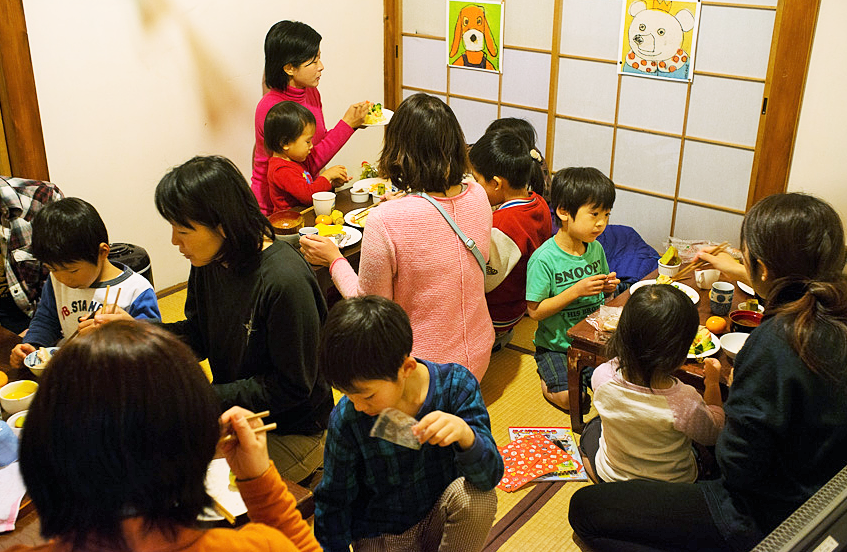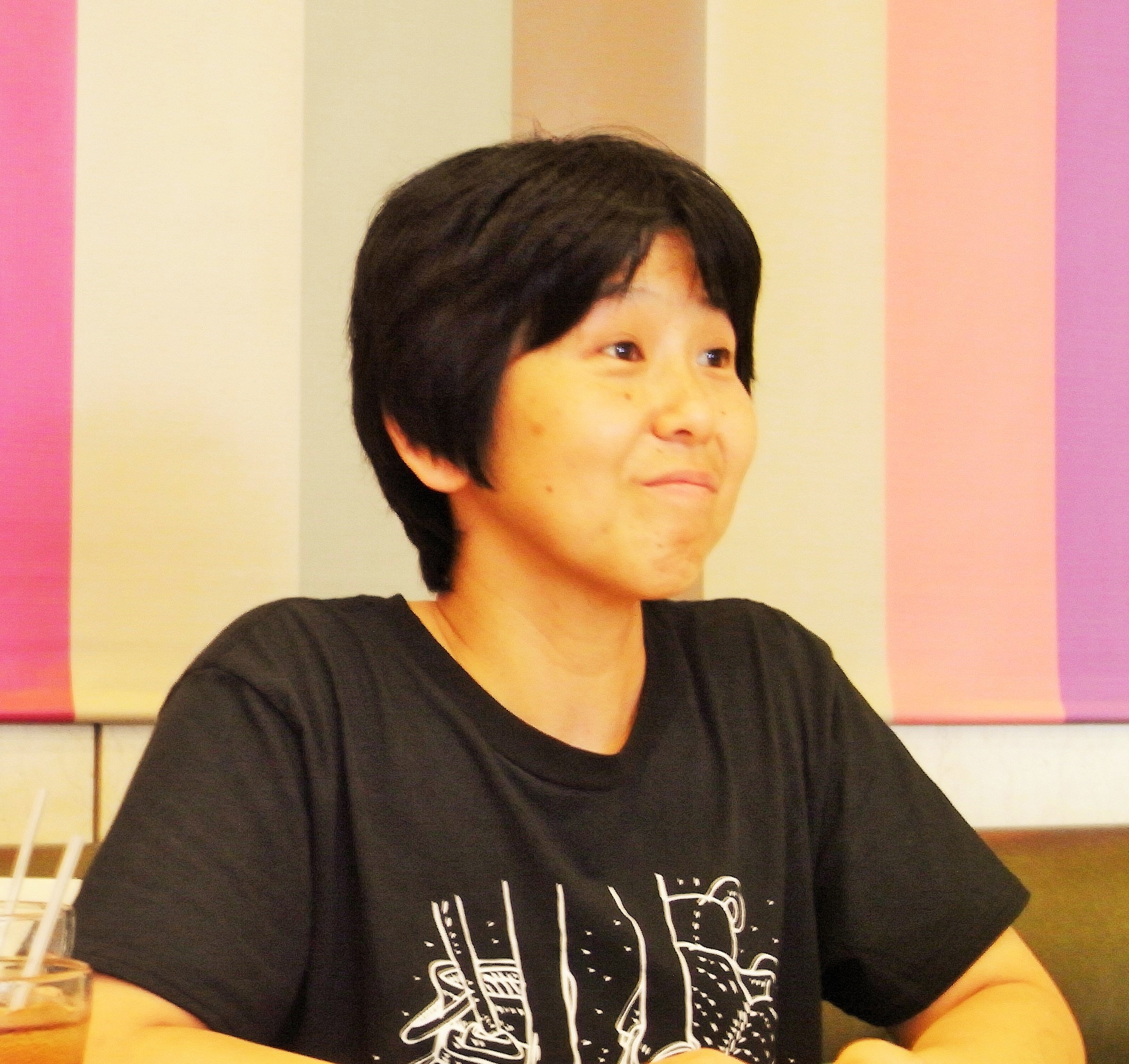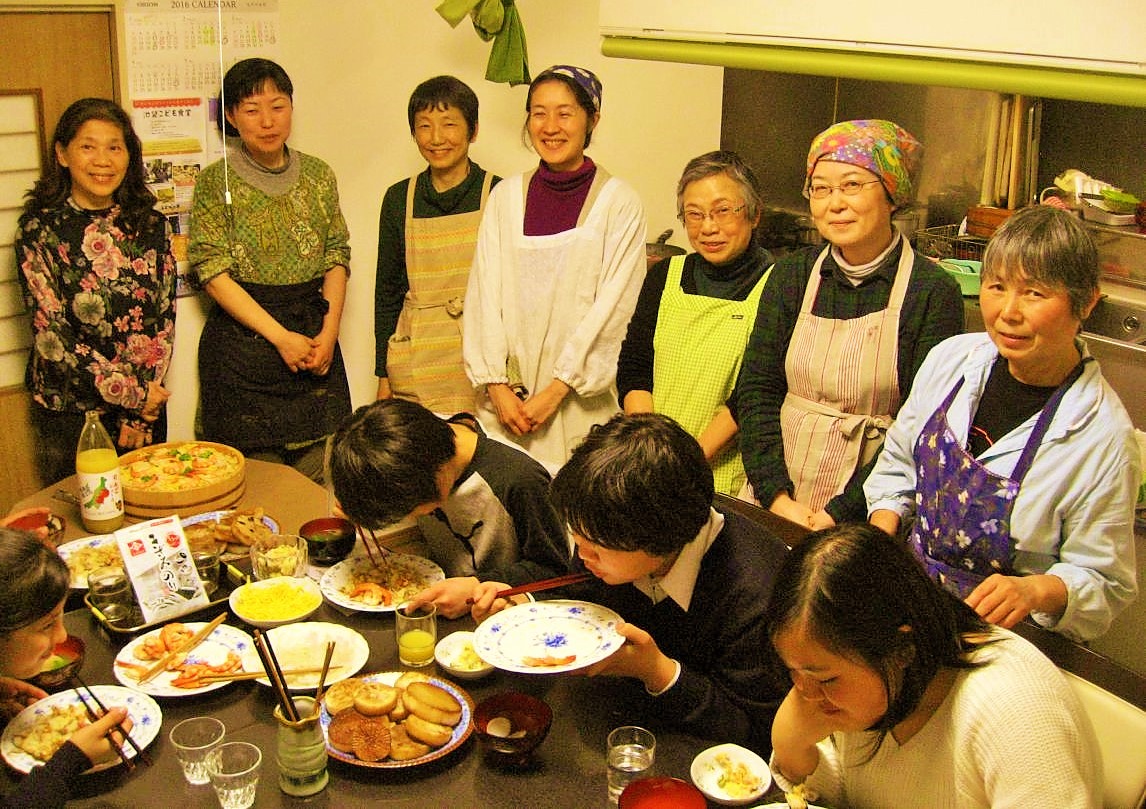The Children’s Cafeteria works to alleviate child poverty through food, the movement has spread over across Japan InsightsActivities / Voice of a nonprofit
Posted on July 11, 2016
by Shinji Moriya (Editional Board of NPO no Hiroba)
If you are living in Japan and keenly attuned to the news in the past few years, you might have frequently heard about “Children’s Cafeteria” and the emerging social issue of child poverty in Japan. The Children’s Cafeteria is a place that welcomes children who are forced by circumstances, such as poverty, to eat alone. The concept has spread to local communities across Japan, and the number of the cafeteria reached at least 319 as of the end of May, Asahi Newspaper reports on July 1, 2016. Today, the movement has expanded beyond just children to include individuals who are looking for companions to have a meal as well as households who are seeking a place to deepen community ties.
The interview featured was conducted with Chikako Kuribayashi, the original founder of the representative of Japanese nonprofit Toshima WakuWaku Network, in September 2014, shortly before the movement gained momentum.
The Children’s Cafeteria works to alleviate child poverty through food: A diverse range of people gather there to create new bonds and change the future of the community
Translated article of NPO Hiroba, Japan NPO Center’s membership newsletter (Issue 72, September 2014, Interviewer and original writer ; Shinji Moriya, Editional Board of NPO no Hiroba)

In the cafeteria, children, parents and single parents alike gather together to eat, creating a homely and lively environment in the community.
The child poverty rate in Japan was 16.3 %
The Ministry of Health, Labour and Welfare (MHLW) recently announced that the child poverty rate was 16.3% in 2012, the worst figure to date. This poverty rate includes children younger than age 18 who live in households with an annual income below half of the national average (the poverty line is roughly 1.22 million yen). It means that one in six children are living in poverty. Here, “poverty” does not refer to absolute poverty—in which children have nothing to eat and face immediate threats to their own survival; which is what many people imagine when they hear the word “poverty”—but rather relative poverty in which they can survive but are not able to achieve a minimum standard of living that is taken for granted in the society. It is astounding that this degree of poverty exists in Japan today. The Toshima Children’s Wakuwaku Network is an NPO that tackles the issue of childhood poverty through efforts to increase community power and connections by ensuring that children living in poverty don’t have to eat alone. The NPO started out with the creation of Play Parks, places based on the concept of having people from the community look after and raise the children in the community. It also provides opportunities for anyone, regardless of economic poverty, to learn. In addition to the group’s activities, to help children learn at no cost, the Kanamecho Asayake Children’s Cafeteria was opened in March 2013 as a new venture for the group.
Children who are experiencing problems
We asked Representative Chieko Kuribayashi why the group started its Children’s Cafeteria. She said it was inspired by Kazuo Yamada when he visited a place where learning support was being provided and commented, “I can’t teach children how to study, but I can probably eat together with them.” Yamada later became the head of the Children’s Cafeteria. Kuribayashi described the background behind the Children’s Cafeteria as follows: “Through our Play Park activities, we saw that there are children experiencing various problems. For instance, some of them don’t attend school and have nowhere to go besides their home. Some are bullied and cannot play with friends. Some are raised by a single parent who returns home late, so they have to eat alone and end up buying dinner at a convenience store or supermarket. We cook for and eat with such children, and also ask them to help out. We wanted to use food as a way for these children to experience the warmth of a happy family environment.”
Kuribayashi didn’t forget what Yamada had said, and together they materialized the Children’s Cafeteria idea. They were happy to learn that there were already similar facilities in other places in Tokyo. To the Toshima Children’s Wakuwaku Network, the Children’s Cafeteria is a way to provide a place for children as well as adults.

Chieko Kuribayashi, the representative of the Toshima Wakuwaku Network
Children will grow on their own. All adults have to do is watch over them.
The Kanamecho Asayake Children’s Cafeteria is open from 5:30 p.m. on the first and third Wednesday of each month. It is located in Yamada’s home in a quiet residential area in Toshima Ward, which gives it a uniquely homey atmosphere. The capacity is 30 children from infants to high school students, who pay 300 yen to eat together with other participants, cafeteria staff, and volunteers. The meals include rice, miso soup, and various side dishes. Yamada originally baked bread in his home and sold it in the region, so he has food facilities in his home and a license for manufacturing bread and confections. To open the Children’s Cafeteria, sufficient preparations were made such as obtaining a new food and beverage manufacturing license and ensuring sufficient hygiene management.
We talked to Yamada, the head of the cafeteria who is nicknamed “Grandpa Yamada.” He reflected on when the cafeteria was first opened, saying, “It was good that we started this program, initially I wasn’t entirely convinced about whether there were so many children living in poverty and whether they would eat with us. At first not many children came, so a lot of the food we prepared was left over.” However, due to efforts such as inviting people from the neighborhood, the program rapidly gained awareness through word of month. More than a year later, it is a thriving program with over 50 participants at the busiest times. Each time, many children can enjoy eating together and playing to their heart’s content. “Here, they can do what they want. Our only rule when we started the cafeteria was that there would be no rules,” said Yamada with a smile. “If we decided on objectives and rules, we would be bound by them. That’s no fun at all, and you can’t keep at something for a long time if it isn’t fun.”
Yamada unequivocally stated that he has never had to discipline a child or any of the roughly eight staff members who are always at the cafeteria. He calmly stated, “The staff members think and act for themselves, even without me having to intervene. The same applies to the children. All we have to do is watch over them. If they do something bad, they understand this on their own. But if adults scold them, the children’s growth may be obstructed.”
In the past, there was a child who was attending school but was always skipping class. He would spend the entire day in the nurse’s office. He started coming to our cafeteria but he never played with the other children and seemed isolated. Yet, he would watch with great enthusiasm as the staff members baked bread. Then he started helping out on his own. Following this, his personality quickly became more proactive as well. His mother was astounded and very glad to see his dramatic transformation. Yamada happily said, “Children have the power to grow by themselves.”
“Anyone and everyone is welcomed here. At the Children’s Cafeteria, everyone is free. . Children who are placed under various burdens can shed their burdens here and do what they want, he said. “This mood, and atmosphere, might help these children grow,” he said.

The staff are the “super” housewives living in the nearby community. “The local community is where women shine. Through food, women are adroit at bringing together people and their smiles” Kuribayashi states.
Community power grows by gathering together a diverse range of people
At first the group expected elementary and junior high school students to come, but today there are many preschool-aged children accompanied by their parents. One mother said, “My husband comes home late and we’re tired of eating at family restaurants. Here, my child is watched over with a smile, even if he has bad manners. The food is made of safe ingredients and costs just 300 yen.”
Lately, there are more parents and children visiting who are not from poor households or experiencing problems at home. Yamada has no problem at all with this. He said, “Anyone can come. I pay no attention to what type of people they are; all I want is for them to have a good time.” The mothers who come to the Children’s Cafeteria learn about childhood poverty and become more aware of this issue. Kuribayashi said this has resulted in more “meddlesome” women, some of whom have commented, “My child’s friend has to spend time by himself because his mother is away at night, so I would like to bring him here” or “When I go shopping at the supermarket, I see a child buying snacks every night around 7:00 p.m. I can’t help but wonder if he is okay.” They personally experience how the increasing number of regional supporters enhances and expands regional strength.
Kuribayashi said, “For instance, abuse is an issue that cannot be resolved without community power. The government might possess personal information, but it can only act during the day. Yet the people who discover abuse might be mothers who realize they often hear angry voices at night, and then consult with me. By having more people be aware of these things, we can create a finer ‘net’ of support that covers the region.” Information about children who are suffering, obtained in this way, leads to problem resolution when shared with experts and specialist organizations connected to the group’s network. The group functions like a platform linking the region. It is right next to the children, mothers, and fathers it wants to be closer to, which is the true power of the community.
In addition, local establishments that learned of the Children’s Cafeteria have been providing food. A formerly homeless man who was baking bread once asked a mother if he could hold her baby for a moment. When he did, he whispered, “How cute.” “He may never have had the chance to hold a baby if he didn’t come to the Children’s Cafeteria. There are sometimes opportunities like this for everyone involved to feel joy,” said Kuribayashi with a smile.

*************************************************************************************
Including the Play Parks, Kuribayashi and the others have been active for 10 years. At first there was no structure in place for cooperation with the community residents, and they did their work in isolation. She was held up by her strong desire to help children, which allowed her to come this far. Kuribayashi said brightly, “There are many difficulties even now, but we have made friends. As long as we have friends, we’ll be fine no matter what happens. That is how I feel right now.”
The Children’s Cafeteria is named “cafeteria,” but it is not merely a place where food is served. Children and adults experiencing various problems gather to act freely and with mutual respect, make it a place where they also experience growth together. And the Children’s Cafeteria isn’t just for children, but is visited by many different adults as well. There are no preconceptions or prejudices there; the children and adults are very diverse. It is a place where children can feel at home and at peace knowing they have friends and adults whom they can trust.
When asked about the group’s future activities, Kuribayashi immediately and forcefully replied, “Eliminating childhood poverty is everything. I want to create a society where children do not give up on their lives because of money. We will continue working to that end in the future.” The group is striving to be an NPO that is active in the community and creates connections there.
According to Kuribayashi, many people merely say that childhood poverty is an issue caused by their parents, but the chain of poverty cannot be broken in that way. Initiatives like the Children’s Cafeteria are necessary exactly because it has become difficult to ensure sufficient food in individual households. She said, “Children have small voices and cannot ask for help on their own. And because their parents cannot do so, the community should provide assistance. To that end, it is important to bring vitality to the children in the community and increase the supporters there. ‘Meddling’ in their lives is the first step.” This ‘meddling’ is the power of the community.
Recent Articles
- Towards a society where children want to embrace life
- The Evolution of Philanthropy: Five approaches shaping contemporary practice
- 25 years of community understanding and moms’ hard work: The activities of Kinutama Play Village
- Connecting memories: Courage found at the film screening of parents’ legal battle after the Great East Japan Earthquake Tsunami
- An NPO project I came across while reflecting on teacher shortages after leaving my teaching job
- To unlock philanthropy’s potential for Japan, we need to understand its meaning